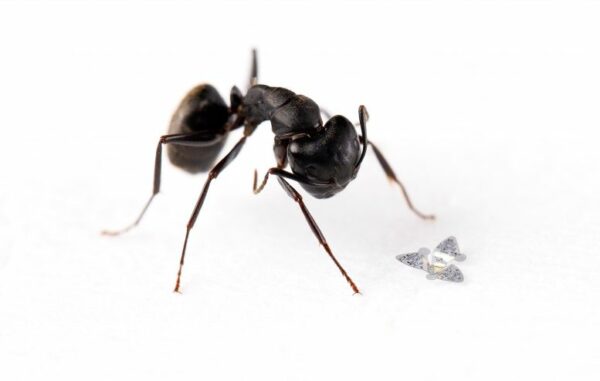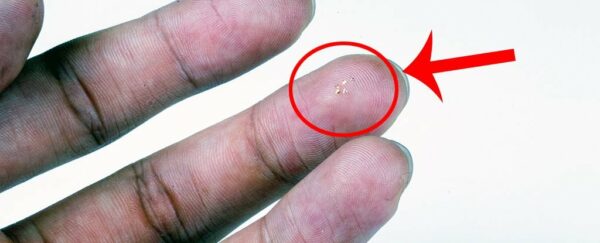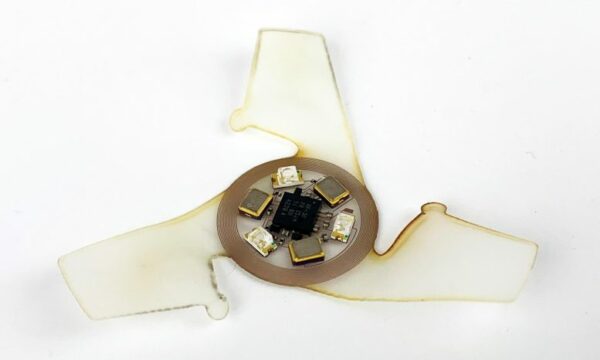Microflier: The revolutionary tiniest winged microchip is all set to address environmental pollution and more.

Recently engineered microflier, the winged microchip has kicked up a storm of excitement in the world of robotics. As the tiniest-ever human-made flying structures, these micro fliers also can be packed with ultra-miniaturized technology, including sensors, power sources, antennas for wireless communication, and embedded memory to store data. In simple words, it is a robot smaller than the size of an ant.

The discovery has been featured on the cover of the September 23, 2021, issue of ‘Nature.’
The structure in the size of a grain of sand, scattered microfliers could track air pollution, airborne disease, and environmental pollution.
The Northwestern University engineers have added a new characteristic to the electronic microchips: flight!
About the size of an ant, the new flying device or microchip (or “microflier”) does not have an engine or motor. Instead, it catches flight on the wind, similar to a maple tree’s propeller seed’s flight mechanism. The microchip spins like a helicopter through the air towards the ground.
The discovery is inspired by studying maple trees and other types of wind-dispersed seeds. The engineers optimized the microflier’s aerodynamics to ensure that it falls at a slow velocity in a controlled manner when dropped from a high elevation. This response stabilizes its flight, provides dispersal over a broad area and increases the quantity of time it interacts with the air, making it ideal for monitoring air pollution and airborne disease.
“Our intention was to add winged flight to small-scale electronic systems, with the idea that these skills would allow us to distribute highly functional, miniaturized electronic devices to sense the environment for pollution monitoring, population surveillance or disease tracking,” stated Northwestern’s John A. Rogers, who led the discovery’s development. “We were able to do that using ideas inspired by the biological world. Over the course of billions of years, nature has invented seeds with very advanced aerodynamics. We adopted those design ideas, adapted them and applied them to electronic circuit platforms.”
A scholar in bioelectronics, Rogers is the Professor in Louis Simpson and Kimberly Querrey of Materials Science and Engineering, Biomedical Engineering and Neurological Surgery in the McCormick School of Engineering and Feinberg School of Medicine. He is also the director of the Querrey Simpson Institute for Bioelectronics. Yonggang Huang, the Jan and Marcia Achenbach Professor of Mechanical Engineering at McCormick led the study’s theoretical work.
‘We think we that beat Mother Nature.’
Most people have observed a maple leaf’s spinning propeller seed spin through the air and lightly land on the sidewalk. This movement is just one example of how nature has evolved innovative, advanced methods to enhance the survival of various plants. By guaranteeing that seeds are widely dispersed, or else sedentary plants and trees can produce their species over vast distances to populate broad areas.

According to Rogers, “evolution was possibly the driving energy for the advanced aerodynamic characteristics exhibited by many species of seeds. These biological structures are outlined to fall gently and in a controlled manner, so they can interact with wind patterns for the longest-possible period of time. This feature increases lateral distribution via purely passive, airborne mechanisms.”
From where did the idea of the microflier come?
To create the microfliers, the Northwestern team examined the aerodynamics of several plants’ seeds, bringing its most direct inspiration from the tristellateia plant, a flowering plant with star-shaped seeds. Tristellateia seeds have a bladed winged structure that catches the wind to fall with a slow, rotating spin.
Rogers and his team designed and developed many different microfliers, including one with three wings, changed to similar shapes and angles as the wings on a tristellateia seed. Huang led full-scale computational modeling of how the air flows around the microflier to copy the tristellateia seed’s slow, controlled rotation to nail the ideal structure.
Based on this modeling, Rogers’ group then prepared and tested structures in the lab, using advanced methods for imaging and quantifying flow patterns in collaborations with Leonardo Chamorro, an associate professor of mechanical engineering at the University of Illinois at Urbana-Champaign.
The resulting structures can be formed across various sizes and shapes, some with features that give nature a run for its money.
“We think that we beat nature,” Rogers said. “At least in the narrow sense that we have been able to build structures that fall with more stable trajectories and at slower terminal velocities than equivalent seeds that you would see from plants or trees. We also were able to build these helicopter flying structures at sizes much smaller than those found in nature. That’s important because device miniaturization represents the dominating development trajectory in the electronics industry, where sensors, radios, batteries and other components can be constructed in ever smaller dimensions.”
Other sources of idea
Rogers’ team pulled inspiration from another familiar novelty: a child’s pop-up book to produce the devices.
His team first built antecedents to flying structures in flat, planar geometries. Then, they bonded these precursors onto a somewhat stretched rubber substrate. When the extended substrate is relaxed, a controlled buckling process causes the wings to “pop up” into precisely defined three-dimensional structures.

“This strategy of building 3D structures from 2D precursors is powerful because all existing semiconductor devices are built in planar layouts,” Rogers said. “We can thus utilize the most advanced materials and production methods used by the consumer electronics industry to make completely standard, flat, chip-like designs. Then, we just transform them into 3D flying shapes by principles that are similar to those of a pop-up book.”
Power-packed with promise
The microfliers include two parts: millimeter-sized electronic functional components and their wings. As the microflier falls through the air, its wings interact with the air to create a slow, stable rotational motion. The weight of the electronics is shared low in the center of the microflier to prevent it from losing control and chaotically tumbling to the ground.
In exhibited examples, Rogers’ team combined sensors, a power source that can harvest ambient energy, memory storage, and an antenna that can wirelessly transfer data to smartphones, tablets, or computers.
In the laboratory, Rogers’ group outfitted one device with all of these elements to detect particulates in the air. In another example, they combined pH sensors that could be used to monitor water quality and photodetectors to measure sun exposure at different wavelengths.
Rogers believes that large numbers of devices could be dropped from a plane or building and broadly scattered to monitor environmental remediation efforts after a chemical spill or track air pollution levels at various elevations.
“Most monitoring technologies involve bulk instrumentation designed to collect data locally at a small number of locations across a spatial area of interest,” Rogers said. “We envision a large multiplicity of miniaturized sensors that can be distributed at a high spatial density over large areas, to form a wireless network.”
Disappearing characteristic
But what about all the electronic litter created? Rogers has a plan for that as well. His lab already produces transient electronics that can harmlessly dissolve in water after they are no longer needed, as exhibited in recent work on bioresorbable pacemakers. Now his team is using the same materials and procedures to build microfliers that naturally degrade and disappear in groundwater over time.

“We fabricate such physically transient electronics systems using degradable polymers, compostable conductors and dissolvable integrated circuit chips that easily vanish into environmentally harmless end products when exposed to water,” Roger said. “We recognize that recovery of large collections of microfliers might be difficult. To address this concern, these environmentally resorbable versions dissolve naturally and harmlessly.”




